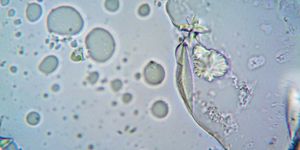Artificial Light Exposure May Increase Diabetes Risk
In the modern world, many people are exposed to artificial light at night. It's even become such a problem that a dark sky society has been established to draw attention to the problem of light pollution at night. While cities are obviously soaked with light at night, even the suburbs and forest parks that can be many miles from major sources of light can be affected too. Now researchers have found that exposure to outdoor artificial light at night (LAN) is associated with both blood sugar dysregulation and a significant increase in an individual's risk of diabetes. The findings, which have been reported in Diabetologia, have suggested that as many as 9 million cases of diabetes in Chinese adults may be attributed to LAN exposure.
Most mammals have a circadian rhythm; they are biologically in tune with the 24-hour cycle of light on Earth. Research has shown that light pollution can disrupt the circadian rhythm of animals, cause premature death, and contribute to the loss of biodiversity. People who tend to work at night have also been shown to be at higher risk of obesity, cardiovascular disease, and premature death.
In previous studies, exposure to artificial LAN has caused glucose intolerance in a rat model, which developed high levels of insulin and blood sugar. When mice were exposed to low levels of light at night for four weeks, they gained weight, and did not regulate glucose as well as animals who had completely dark nights, though both sets of animals ate about the same amount and expended equal amounts of energy.
Previous research has also shown that when elderly people are exposed to LAN in their bedrooms, there is a greater risk of diabetes. Another study compared maps of light pollution to regional data on adult health, and this also indicated that as LAN intensity increases, people are more likely to have higher systolic blood pressure, body mass index, and LDL ('bad') cholesterol.
Both diabetes and artificial LAN exposure are growing problems in China, a rapidly modernizing society full of workers who toil at all hours.
In this work, the researchers used interview data from a study of 98,658 adults in the general population from 162 sites across China, which included information about medical history, lifestyle, education, and family history, among other demographic data. The mean age of participants was 42.7 years and about half were women. Blood samples were also taken to calculate glucose levels during fasting and after a meal, as well as glucose in hemoglobin, or glycated hemoglobin (HbA1c). Participants were scored based on the artificial outdoor LAN exposure at their homes, and put in one of five groups. The median light intensity exposure in the highest group was 69 times greater than the lowest.
Those who were exposed to the most LAN were 28 percent more likely to have diabetes than those exposed to the least. People who were chronically exposed to residential outdoor LAN were more likely to have insulin resistance, diabetes, and high blood glucose, and their beta cells, which produce insulin, were more likely to be impaired, compared to people who had the least exposure to residential outdoor LAN. This was true even when the researchers controlled for diabetes risk factors like levels of activity and obesity.
The researchers stressed that this is a global problem; about 83 percent of the global population, including 99 percent of people in Europe and the United States, are exposed to light pollution. An increasing body of evidence has suggested that LAN is also bad for our health. However, the study authors noted that we don't yet know whether this relationship is causal, or simply a correlation.
Sources: WHO, Diabetologia



![Master Lab Weighing: Accuracy, Compliance & Audits [eBook]](https://d3bkbkx82g74b8.cloudfront.net/eyJidWNrZXQiOiJsYWJyb290cy1pbWFnZXMiLCJrZXkiOiJjb250ZW50X2FydGljbGVfcHJvZmlsZV9pbWFnZV85MWRmZmRjMDIwNDBlMWJjMzYwN2ZiYWY2ZjI4ZGMzYzBmZGMwZGMyXzkxOTcucG5nIiwiZWRpdHMiOnsidG9Gb3JtYXQiOiJqcGciLCJyZXNpemUiOnsid2lkdGgiOjcwMCwiaGVpZ2h0IjozNTAsImZpdCI6ImNvdmVyIiwicG9zaXRpb24iOiJjZW50ZXIiLCJiYWNrZ3JvdW5kIjoiI2ZmZiJ9LCJmbGF0dGVuIjp7ImJhY2tncm91bmQiOiIjZmZmIn19fQ==)





